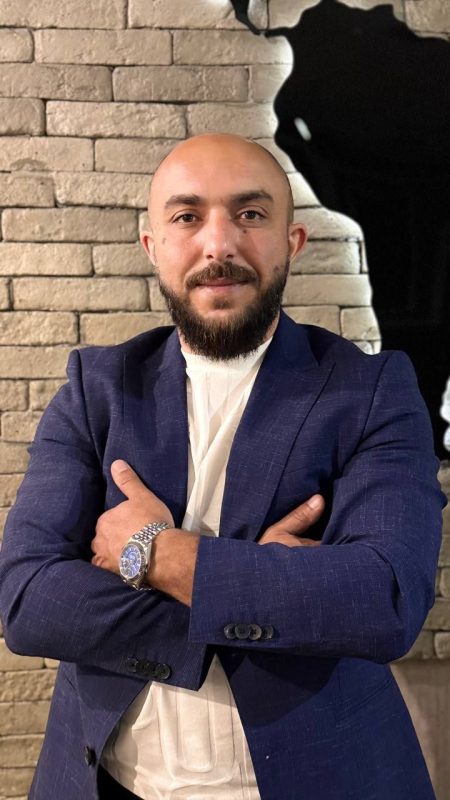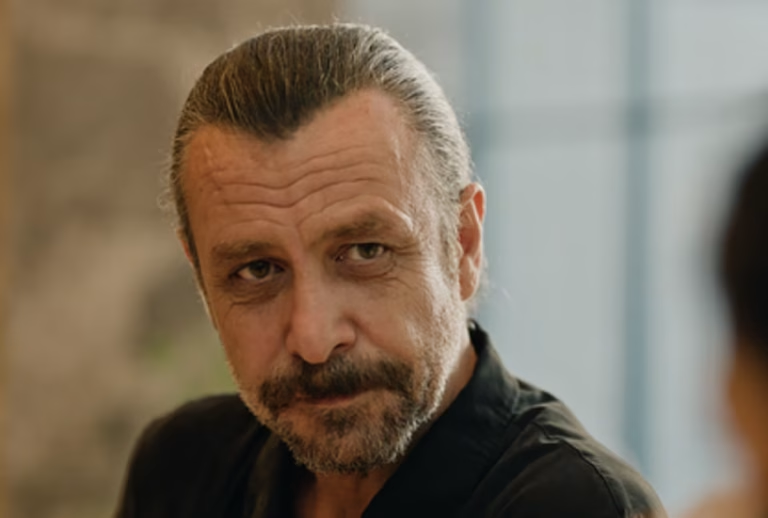From bold visuals to cultural roots, how Azerbaijan’s most experimental art director built a global creative career by rethinking the basics
These days, you don’t need a Hollywood budget to win big in the film world. More and more, it’s the personal, culturally rich stories — often made with very little money — that are capturing hearts and winning awards. At the 2025 Cannes Film Festival, that trend stood out: Iranian director Jafar Panahi won the top prize for It Was Just an Accident, a low-budget film made despite a ban on his work. And Brazil’s Kleber Mendonça Filho took Best Director for The Secret Agent, a story rooted in his country’s identity. Together, these wins show that what matters most today isn’t special effects or big names — it’s honesty, creativity, and a strong voice.
In this shifting landscape, Intizar Gasimov stands out as a pioneering figure from Azerbaijan, as he knows how local innovation can influence global creative standards. With over 20 years in film, advertising, and culture, and numerous international accolades, he helped introduce modern production tools to Azerbaijan at a time when few others had access to them. His work has not only elevated the quality of local productions. Still, it has also garnered international recognition, including awards at prestigious festivals such as Cannes Corporate Media & TV Awards 2014, and a national award as “Most Creative Producer of the Year” from the Kavkaz Media Association in 2014.
Intizar’s influence goes beyond the technical. He co-founded a Production Academy, which has trained over 40 professionals in post-production. One of his standout achievements in this field was supervising post-production for Qız Qalası (The Maiden Tower), a film that went on to win awards at 8–9 international festivals, including Best Short Film at the 2022 Golden Beggar International Film Festival — a success he directly contributed to. His active involvement in cultural promotion initiatives, both in Azerbaijan and Canada, underscores his dedication to showcasing Azerbaijani culture on the global stage. He’s a member of respected industry groups, including the Guild of Producers of Azerbaijan, a judge at major festivals, including the Baku International Short Film Festival and the Baku Municipal Theatre, and a consistent voice for innovation rooted in culture. His work shows how creative leadership can grow from the local level and still make waves internationally.
Innovation doesn’t need a big budget
In Azerbaijan, Intizar is known as someone who’s not afraid to try new things first. At a time when the local industry lacked access to high-end tools, he and his team were the first in the country to use HD video, which gives a much sharper image and is now standard in TV and streaming platforms.
Gasimov and his team also pioneered non-studio green screen filming — shooting chroma key scenes outdoors using portable rigs and DIY lighting setups. “Imagine filming something like The Avengers without the Marvel studio gear! That’s a tough nut to crack, funny, though,” Intizar comments. Editing was done on early Apple computers, without even a dedicated graphics card — a workaround that required rebuilding part of the post-production workflow from scratch.
These methods, once viewed as experimental, have since become the industry standard in Azerbaijan. One of his biggest achievements was creating a “Zabit Şərəfi” (The Honor of the Officer), the first noir-style film ever made in Azerbaijan and the Caucasus. Created without the traditional funding such ambitious projects typically require, it defied expectations — and critics who said it couldn’t be done. The film became a national sensation and is now regarded as a cultural milestone.
It catalyzed a new direction in Azerbaijani cinema, inspiring a wave of visually bold and thematically daring productions. Film critics and cultural institutions praised it not only for its aesthetics but for reimagining what local film could be. “We didn’t have much to work with, but we found a way. I think it showed that sometimes a fresh idea matters more than a big budget,” Intizar says. Intizar and his team used simple tools, like repurposed industrial lights and minimal sets, to create strong visual contrasts. Instead of relying on expensive effects, they focused on shadows, mood, and careful postproduction.
His experience shows that when there’s not much money, the way you work becomes just as important as what you work with. In many smaller industries, teams learn to combine roles, cut steps, or use simple tools in smarter ways. These skills are now useful everywhere, even in big studios that are looking for faster and cheaper ways to create.
When a Small Film Can Travel Far
A good example of how a small team and a focused process can outperform a big production is the short film Qız Qalası (The Maiden Tower), where Intizar Gasimov was responsible for postproduction and art direction. Despite limited resources, the film received wide recognition, winning Best Editing at the Halicarnassus Film Festival 2022, Best Short Film at the Golden Beggar Festival 2022, and accolades from Singapore’s World Film Carnival and Short Film Factory. These awards celebrated not only the storytelling but also its emotional precision, shaped directly by Gasimov’s post-production and art direction.
Such international recognition was reached thanks to the efforts taken by Intizar. He took on the postproduction management for the film to hit the audience and the critics. He managed the editing process, helped shape the film’s atmosphere, and ensured the visuals supported the narrative. Jury notes from multiple festivals pointed to the clarity and pacing of the film, aspects shaped in post-production. Without his oversight, The Maiden Tower might not have gained such international traction.
Intizar recommends: “When you can’t afford perfection, it’s often better to take bold risks instead. Strong visuals, unusual angles, or simple but emotional stories can make a bigger impact than expensive effects.” For many creators, the real power lies in how you frame the idea, not how much you spend to make it.
The experience highlights a broader point: when you don’t have access to large budgets or teams, having a clear direction and staying close to the core idea becomes even more important. It’s less about polish, more about focus. And that, sometimes, is what makes a film stand out across different audiences and cultures.
The impact of Qız Qalası speaks to a broader lesson. When resources are limited, success often depends on whether someone can hold the creative thread, making sure each decision, however small, contributes to a unified whole. It’s not about controlling every detail, but about ensuring the story stays clear and intact from concept to screen. That kind of leadership is often what carries a film across borders.
Make your culture your creative asset
In a global media landscape where trends spread fast and content can start to look the same, the strongest work often comes from those who lean into their own cultural background. Audiences today don’t just want polished visuals. Instead, they’re looking for meaning, identity, and something that feels real. For creators from smaller countries or immigrant communities, this opens a unique opportunity: your story is your strength.
Intizar Gasimov has embraced this idea throughout his career. Whether in Azerbaijan, Turkey, Ukraine, or now Canada, he uses his work to spotlight Azerbaijani life and heritage. A recent example of how local culture can lead to global success is the French film The Taste of Things, which won Best Director at Cannes in 2023. Though centered around traditional cuisine, it struck a chord worldwide by embracing the beauty of national identity. Intizar’s work follows the same idea — using the rhythms, visuals, and values of Azerbaijani life to tell stories that connect with people across cultures.
“For me, culture isn’t just something you protect. It’s something you spread by turning it into living, shared experiences that adapt to new places and audiences,” Intizar comments. It means that when creators follow this approach, they bring their roots into their work; they don’t just preserve identity but expand it.
Sometimes, that expansion means reimagining not just what a story says, but how and where it’s told.
When storytelling breaks its frame
Across the creative world, the line between media is becoming more fluid. Theatre blends with film, live performance incorporates digital art, and audiences no longer expect stories to stay confined to traditional stages or screens. What matters is the experience — and the emotional imprint it leaves behind.
Intizar Gasimov has been part of that shift. During his time as a producer at the Baku Municipal Theatre, he spearheaded a radical integration of theatre and cinema, crafting new formats that redefined audience engagement in Azerbaijan.
Among his most innovative projects was Image and Voice, a hybrid theatre-cinema series that blended live performance with on-screen visuals to explore the boundary between stage and screen. Equally bold was Theatre Without Borders, a mobile touring program that brought these immersive productions into unconventional venues — from warehouses to community centers — making high art more accessible to broader, younger, and previously untapped audiences.
“These were some of the most joyful projects of my life,” Intizar recalls. “We were carrying projectors through narrow backstreets, setting up in places where people had never seen theatre before. Sometimes the lights would go out mid-performance, and the audience would still stay. That’s when I realized: it’s not the venue that creates magic. It’s the connection.”
These projects didn’t rely on large budgets or flashy staging. They were built on a simple idea: that the method of delivery can be just as creative as the content itself. In many ways, they echoed Gasimov’s film ethos — doing more with less, and reaching further by rethinking the frame.
As creative industries continue to evolve, it’s becoming clear that innovation isn’t defined by scale or access — it’s defined by perspective. The most resonant work today comes not from the biggest budgets, but from those who rethink tools, formats, and cultural narratives. When creators embrace constraints, draw from local roots, and experiment boldly, they don’t just keep up with change — they help define what the future of storytelling looks like.




![[Watch] Video Essay draws parallel between the works of Wes Anderson & Roy Andersson](https://79468c92.delivery.rocketcdn.me/wp-content/uploads/2017/02/Screenshot-from-2017-02-09-200324-768x392.png)
![Gabbeh [1996] Analysis: Glimpses into a lyrical divinity](https://79468c92.delivery.rocketcdn.me/wp-content/uploads/2022/08/Gabbeh-1996-768x509.jpg)
![13 Reasons Why [2017]: The importance of reaching out to people](https://79468c92.delivery.rocketcdn.me/wp-content/uploads/2017/04/13.Reasons.Why_.S01E11.720p.WEBRiP.x265.ShAaNiG.mkv_20170415_100221.270-768x432.jpg)

